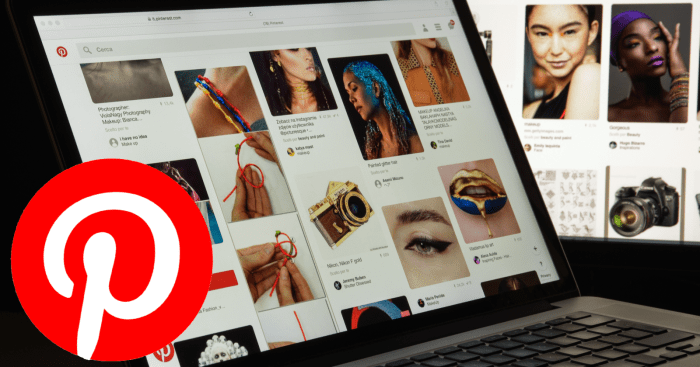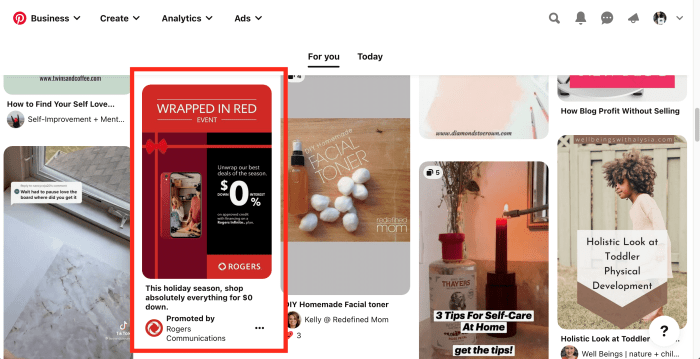Using Pinterest Ads opens up a world of possibilities for businesses looking to boost their online presence and drive traffic to their websites. Dive into the realm of Pinterest advertising and discover how this platform can revolutionize your marketing strategy.
Benefits of Using Pinterest Ads

Pinterest ads offer a unique opportunity for businesses to reach a highly engaged audience and drive traffic to their websites. By incorporating Pinterest ads into their marketing strategy, companies can increase brand visibility and attract potential customers in a visually appealing and creative way.
Increased Brand Visibility
Pinterest has over 400 million monthly active users, making it a valuable platform for businesses to showcase their products or services. By creating visually appealing ads that resonate with Pinterest users, companies can increase their brand visibility and reach a wider audience. The platform’s focus on visual content allows brands to tell their story in a compelling and engaging way, making it easier for users to discover and connect with their products.
Driving Traffic to Websites
Pinterest ads can also help drive traffic to websites by encouraging users to click through to learn more or make a purchase. With features like shoppable pins and promoted pins, businesses can direct Pinterest users to their website where they can explore products or services further. This not only increases website traffic but also boosts conversions and sales. By strategically targeting the right audience with relevant content, businesses can effectively drive traffic and generate leads through Pinterest ads.
Types of Pinterest Ads
Pinterest offers various types of ads to help businesses reach their target audience and drive engagement. Let’s explore the different types of Pinterest ads available:
Promoted Pins
Promoted Pins are regular pins that businesses pay to promote to a larger audience. They blend in seamlessly with organic pins on Pinterest, making them less intrusive to users. Promoted Pins can include a destination link, allowing users to visit the business’s website or make a purchase directly from the pin. Examples of businesses that have successfully used Promoted Pins include Macy’s, Home Depot, and Lululemon.
Promoted Video Pins
Promoted Video Pins are similar to Promoted Pins but include a video element. These ads autoplay in users’ feeds, capturing attention and driving higher engagement rates. Businesses can showcase their products or services in action through video content. Examples of businesses that have effectively utilized Promoted Video Pins are Nestle, Adidas, and Sephora.
Carousel Ads
Carousel ads allow businesses to showcase multiple images within a single ad unit. Users can swipe through the carousel to view different products or aspects of a single product. Carousel ads are highly engaging and can help businesses tell a visual story. Examples of businesses that have seen success with Carousel ads include IKEA, Target, and Honda.
Targeting Options for Pinterest Ads
Pinterest offers a variety of targeting options to help businesses reach their desired audience effectively.
Demographics Targeting, Using Pinterest Ads
- Businesses can target specific demographics such as age, gender, location, language, and device type.
- This allows businesses to tailor their ads to the most relevant audience based on demographic characteristics.
Interests Targeting
- Businesses can target users based on their interests, such as fashion, home decor, travel, or fitness.
- This helps businesses reach users who are more likely to engage with their content based on their interests.
Behaviors Targeting
- Businesses can target users based on their behaviors, such as their past purchase behavior or interactions with pins.
- This allows businesses to reach users who are more likely to convert based on their past behaviors.
Retargeting
- Retargeting allows businesses to target users who have previously interacted with their website or pins.
- This helps businesses reach users who have already shown interest in their products or services, increasing the likelihood of conversion.
Best Practices for Creating Pinterest Ads

When it comes to creating Pinterest ads that truly pop, there are a few key best practices to keep in mind. From eye-catching visuals to compelling ad copy, here are some tips to help you make the most of your Pinterest advertising efforts.
Designing Visually Appealing Pinterest Ads
When designing your Pinterest ads, remember that visuals are key. Make sure to use high-quality images that are both engaging and relevant to your target audience. Bright colors, clear fonts, and a clean layout can help your ad stand out in a crowded feed. Don’t forget to include your logo or branding elements to increase brand recognition.
Optimizing Ad Copy for Better Engagement
In addition to stunning visuals, your ad copy plays a crucial role in capturing your audience’s attention. Keep your copy concise, compelling, and action-oriented. Use strong calls-to-action to encourage users to click through to your website or make a purchase. Consider testing different copy variations to see what resonates best with your audience.
Importance of Using High-Quality Images
High-quality images are non-negotiable when it comes to creating successful Pinterest ads. Blurry or pixelated images can turn off potential customers and make your ad look unprofessional. Invest in high-resolution photos or graphics that showcase your products or services in the best possible light. Remember, first impressions matter, so make sure your visuals are top-notch.
Tracking and Analyzing Pinterest Ad Performance: Using Pinterest Ads
When running Pinterest ad campaigns, it’s crucial to track and analyze their performance to ensure they are effective in reaching your target audience and achieving your marketing goals.
Key Metrics to Monitor
- Engagement: Monitor metrics like saves, clicks, and close-ups to gauge how users are interacting with your ads.
- Impressions: Keep track of how many times your ad has been viewed to understand its reach.
- Click-Through Rate (CTR): Calculate the percentage of users who clicked on your ad after seeing it.
- Conversion Rate: Measure the percentage of users who completed a desired action, such as making a purchase, after clicking on your ad.
- Return on Ad Spend (ROAS): Determine the revenue generated for every dollar spent on advertising.
Optimizing Ad Performance
- Use A/B testing: Experiment with different ad creatives, targeting options, and calls-to-action to identify what resonates best with your audience.
- Refine targeting: Adjust your targeting parameters based on analytics data to ensure your ads are reaching the right audience.
- Monitor trends: Stay informed about industry trends and user behavior to adapt your ad strategy accordingly.
- Regularly analyze data: Review performance metrics frequently to identify areas for improvement and make data-driven decisions.
- Adjust bids: Optimize your bidding strategy based on performance data to maximize the impact of your ad budget.
